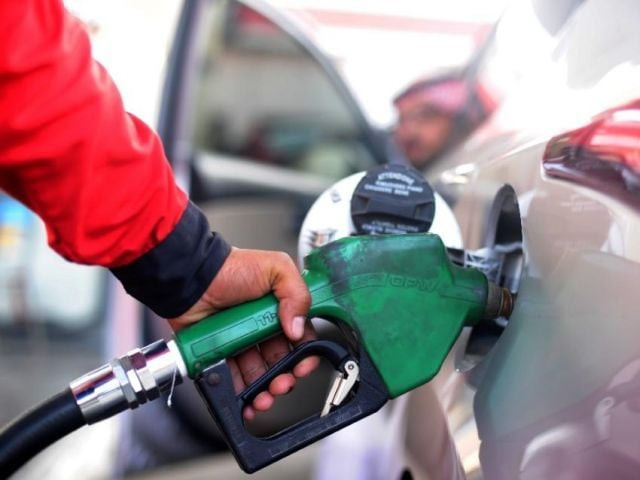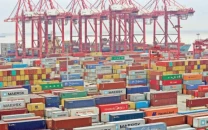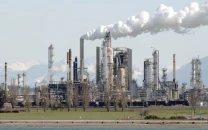Pakistan's petrol crisis of June 2020
Import rationalisation has nothing to do with petrol shortage in the month

On July 21, the Islamabad Policy Institute issued a report titled “The petrol crisis of June 2020.” This report shows a lack of understanding, is based on misinformation and has numerous factual errors.
There was a supply glut building up in the international oil markets since the beginning of the year. On February 25, 2020 the Arab Gulf Platts (fob) price for a barrel of petrol was $60.35, which dropped to $33.87 on March 13, 2020.
While this was happening, the full impact of Covid-19 on the demand side started becoming evident in early March. In Pakistan, this started when Sindh announced a lockdown on March 13, 2020.
In the last week of March 2020, the demand for petrol had dropped by 51% and that of high-speed diesel (HSD) by 58% as a result of the nationwide lockdown. The twin effect resulted in inventories being carried by the oil marketing companies (OMCs) and local refineries losing value every day.
As per prevalent rules, the prices for petroleum products were fixed on the first of every month based on Pakistan State Oil (PSO) imports of the previous month. As a result, the OMCs were hesitant to lift petrol/HSD from local refineries at notified prices since they could import at cheaper rates.
At the same time, the refineries were reluctant to sell their products at a discount to match international prices because this would have transferred the entire inventory loss to the refineries.
In Pakistan, most of the crude is produced in Khyber-Pakhtunkhwa (and goes to Attock Refinery) and has associated gas production of approximately 400 million cubic feet per day (mmcfd).
If the refineries do not lift the full quantity of crude, the fields start backing down production, resulting in gas production also going down.
Pakistan Oil (Refining, Blending, Transportation, Storage and Marketing) Rules 2016 of Oil and Gas Regulatory Authority (Ogra) include Section 35 (g), which provides that local OMCs have to first lift local refinery production before they can import any additional requirement.
On March 4, 2020, Attock Refinery and Byco refinery notified the Petroleum Division that the OMCs were not lifting enough to keep operations at full output. This was followed by letters from the refineries on March 13, 2020 and March 17, 2020. On March 21, the Oil Companies Advisory Council (OCAC), a trade body of the OMCs, wrote to the Petroleum Division, recommending rationalisation of imports in light of a lack of ullage. It also recommended cancelling/deferring HSD imports.
On March 23, MOL notified that it was backing down field production on account of reduced lifting of crude by Attock Refinery. On March 25, National Refinery suspended its operations.
Rationalisation plan
In light of these developments, the Petroleum Division issued its oft-quoted letter of March 25, 2020, telling OMCs to cancel their imports. On March 26, the Petroleum Division submitted its rationalisation plan to the Cabinet Committee on Energy (CCOE).
This was followed by Byco refinery shutdown on March 27. Parco was also operating at partial load by this time. Concerns were also raised by the defence establishment over the availability of fuels for its operations, which are supplied partly by Attock Refinery.
After the issuance of the letter on March 25, several OMCs and refineries intimated that they had cargoes in transit and cancellation was not possible.
From March 25 to April 24, when this letter was formally withdrawn, eight cargoes were still allowed to come in, subject to the condition that importing OMCs were also required to lift products from refineries.
In this period, the Petroleum Division minimised imports while not letting any field shutdown, yet avoiding interruption in supply lines.
No shortage was reported during April or May 2020 for either petrol or HSD. If the restriction imposed could have caused shortage, this would have appeared in April or latest by May 2020.
Sailing time from the Gulf markets is three to four days and there was a glut in the market. Also, if the issue had been the restriction, why was there shortage of only petrol and not HSD?
Price structure
The price mechanism was such that if the PSO average turns out to be non-representative of the price trend of the whole month, then other OMCs face a price risk, which could go in their favour or against them.
For a stable price environment, it does not matter, but for a volatile pricing environment, one month is a very long time that can create windfall gains or losses.
PSO imported only four cargoes of petrol in May, three of which were priced in the first eight days of May. As it turned out, the international prices hit a near low point around the first week of May.
The average purchase price of PSO for these three cargoes was $17 per barrel for petrol. The prices started rising internationally around May 10 – the last cargo of PSO for May that got priced on May 29 was at $31 per barrel, but was not included in the monthly average.
As a consequence, whichever company did not have its cargoes priced by May 10, was facing the prospect of having to pay up to 80% more for the same product, if bought by the end of the month, which would have resulted in a major loss in June.
The above clearly shows that the rationalisation of imports by the Petroleum Division had nothing to do with the shortage of petrol in June 2020. The fact is that it was commercially not feasible for the OMCs to maintain stocks of 20 days, as required by their licence conditions.
In this backdrop, the OMCs decided to (a) let inventories run low, (b) not import more to maintain their market share as the demand increased (c) ration the available petrol at their outlets, and (d) hoard in some cases.
Recognising that OMCs may not be carrying enough stocks, the Petroleum Division advised PSO to increase its supplies by up to 50% in June 2020. The question remains whether there really was a shortage in June 2020 for petrol? The recorded sales by OMCs in June 2020 stood at 734,900 tons compared to 617,895 tons in June 2019, an increase of 19% despite some sections of economy still being closed in June 2020.
All OMCs including PSO sold more and ended with higher inventories, so why was there a shortage?
The answer lies in the comparison of June 1-25 with the fortnight that followed. Average sales of petrol for June 1-25 were 25,315 tons a day against average daily sales of 20,240 tons during July 2019 and May 2020. However, when the price was increased on June 26, the sales dropped to 18,255 tons a day, a whopping 28% less than the average of previous 25 days.
These numbers clearly show that part of the increase in sales from June 1-25 was not real consumption but was going into storage/hoarding. Who was hoarding/storing?
Since an inquiry commission has been formed by the federal government to investigate the matter, it is not appropriate to comment on the details prior to the issuance of this report.
The writer is Special Assistant to the Prime Minister on Petroleum
Published in The Express Tribune, September 14th, 2020
Like Business on Facebook, follow @TribuneBiz on Twitter to stay informed and join in the conversation.



















COMMENTS
Comments are moderated and generally will be posted if they are on-topic and not abusive.
For more information, please see our Comments FAQ